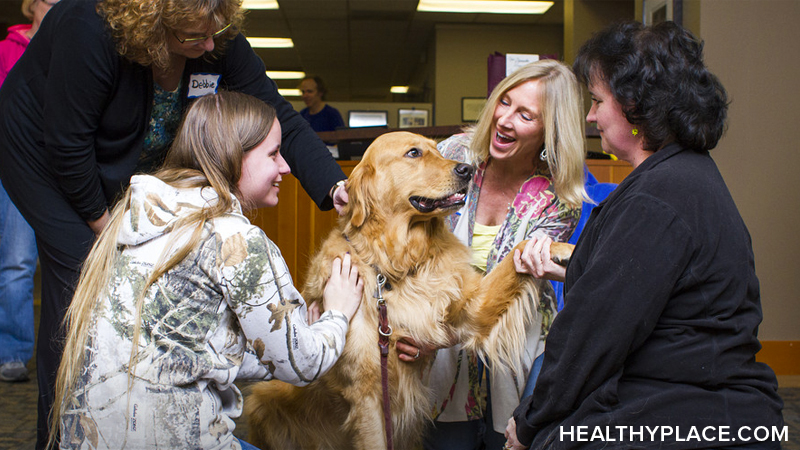What is Animal-Assisted Therapy? How Does It Help?

Animal-assisted therapy is similar to animal therapy, except it uses trained animals in a supervised environment. The practice is usually undertaken by a mental health professional and a veterinarian, and the interactions are monitored and documented. Animal-assisted therapy has many proven benefits, especially for children with mental health challenges and people with autism. So what exactly is animal-assisted therapy and who does it help?
What Is Animal-Assisted Therapy?
Animal-assisted therapy involves the supervised interaction between animals and patients in a closely monitored environment. It usually takes place in a controlled setting, such as a prison, hospital, school or nursing home. Many different animals can be used in this type of therapy depending on the needs of the patient, including dogs (canine-assisted therapy), horses (equine-assisted therapy), rabbits, dolphins, and llamas.
Animal-assisted therapy works on the basis that interaction with animals can light up pleasure sensors in the brain and help patients develop bonds that encourage self-worth, self-regulation, trust, and better social skills. Focusing on an animal's needs can also divert attention away from stress, anxiety or trauma.
How Do Animal-Assisted Therapy Programs Work?
Animal-assisted therapy can be given on a one-to-one basis or in groups. Sessions are always led by a qualified therapist or professional with relevant expertise. Unlike animal therapy, where there are no specific goals or outcomes, animal-assisted therapy is structured into exercises, such as walking, petting, brushing and caring for animals. The outcome of these activities is measured and documented to align with therapeutic goals.
In animal-assisted therapy, animals are generally not pets. The unsupervised use of pets for therapeutic purposes is referred to as “animal therapy” and can be conducted by anyone without medical guidance.
In animal-assisted therapy, trained animals are owned by an organization or company for the specific purpose of aiding medical treatment. They are usually kept in a training facility. Service animals are not considered to be part of animal-assisted therapy.
How Does Animal-Assisted Therapy Help?
Animal-assisted therapy programs offer many benefits for a whole spectrum of conditions and disorders. The benefits of animal-assisted therapy were first realized by Florence Nightingale in the 1800s, who found that interaction with pets reduced anxiety and stress levels in psychiatric patients. Animals were then used in therapeutic practice throughout the nineteenth and twentieth centuries. According to American Addiction Centers, Freud was known for bringing dogs into his therapy sessions.
Animal-assisted therapy is often used in modern practices, particularly in patients who find verbal communication difficult. Studies have shown promising results in people who were unable to communicate verbally prior to the animal visit but responded more openly to therapy after the animal-assisted intervention.
These programs are most likely to be successful in adult patients who already like and respond well to animals. In autistic children, however (even in those who were initially afraid of animals), animal-assisted therapy has shown many advantages across the spectrum. Animal-assisted therapy is not usually recommended to patients who dislike animals or are allergic to them.
Animal-Assisted Therapy for Pain Relief
Animal-assisted therapy programs have also been shown to assist with the treatment of substance abuse and withdrawal. What’s more, current Pain and Headache Reports also reported pain reduction in cancer patients after animal-assisted therapy. The report notes this was verified clinically by increased levels of endorphins after the animal visit.
Because animal-assisted therapy is a relatively new practice, there is little evidence into the long-term outcomes of this practice. A medical review from 2018 concluded that in patients who suffered depression, dementia, PTSD or schizophrenia (along with other conditions), outcomes were generally positive after monitored animal interaction. However, more standardized research should be done to strengthen the existing evidence of the effectiveness of this approach.
APA Reference
Smith, E.
(2019, August 18). What is Animal-Assisted Therapy? How Does It Help?, HealthyPlace. Retrieved
on 2025, April 15 from https://www.healthyplace.com/other-info/mental-illness-overview/what-is-animal-assisted-therapy-how-does-it-help



